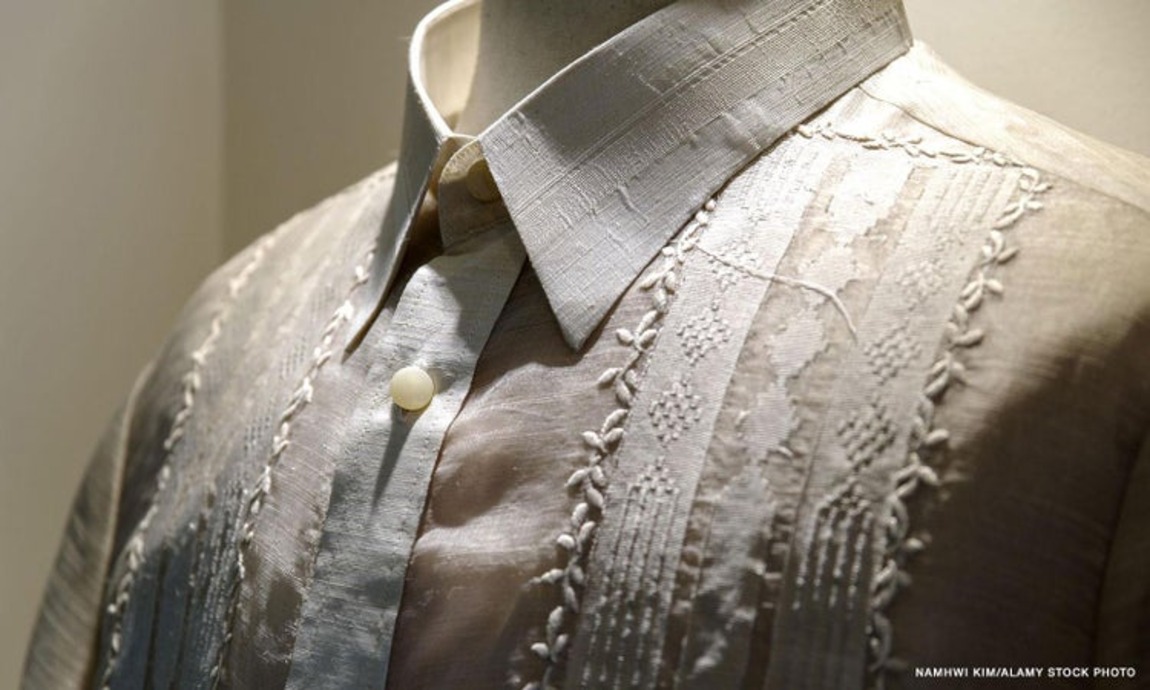In the vibrant tapestry of Filipino culture the barong Tagalog represents a symbol of tradition, grace and national pride. It has long been worn during gatherings and special occasions adorning the backs of Filipino men throughout history. However as Filipinos have dispersed around the world the significance of the barong has taken on meanings and transformations. Today a new generation of Filipino Americans is embracing the barong as a form of self expression, cultural preservation and a powerful connection, to their heritage.
A Brief Historical Overview of the Barong Tagalog
Before we explore how the barong Tagalog has experienced a resurgence in culture it is important to appreciate its rich historical roots. The barong Tagalog, often simply called “barong ” is an attire for occasions in the Philippines. Its origins can be traced back to pre times when indigenous Filipinos donned similar garments. The influence of colonization in the Philippines brought about changes in design and fabric that incorporated elements, from fashion.
The distinctive features of the barong include its material that allows for breathability, embroidery work and loose fit. Traditionally worn untucked it perfectly suits the climate found in parts of the Philippines. Although it is considered an attire it has also come to represent the Filipino culture and patriotism.
However, as the Filipino diaspora took root in different corners of the world, the barong’s significance evolved. In the United States, particularly in places with a significant Filipino population like California and New York, the barong became a symbol of cultural identity, pride, and resilience.
Rediscovering the significance of the Barong, in culture
Filipino American artists and creators who are reclaiming the barong have recognized its potential, as a tool for storytelling and self expression. They are incorporating their heritage into this garment in various innovative ways.
Reimagining Traditional Embroidery
One of the aspects of the barong Tagalog is its intricate embroidery often depicting traditional Filipino motifs and patterns. American creatives have embraced this tradition taking it to heights by reimagining these designs. They blend the traditional with the contemporary creating embroidery patterns that reflect their identity as both Filipino and American. These designs often narrate stories of migration adaptation to a culture and the quest for self identity.
Blending. American Elements
The barong Tagalog has evolved into a canvas where Filipino American artists seamlessly fuse Filipino and American elements. They may incorporate stars and stripes alongside patterns. Combine symbols such as the Philippine sun with iconic American landmarks. This fusion not represents their heritage but also acts as a bridge, between cultures fostering understanding and appreciation for the complexity of their background.
Exploring Modern Fabrics
While piña and jusi have traditionally been used for crafting barongs American creatives are now exploring materials and textures. Through this experimentation they have been able to create barongs that can adapt to contemporary styles while still honoring their cultural roots.
Telling Personal Narratives
The barong holds significance, for Filipino American artists as it serves as a means to share personal stories. Whether its recounting their familys voyage to America reflecting on their upbringing as Filipino Americans or envisioning their aspirations, for the future each barong becomes a representation of living history. These garments enable individuals to stay connected with their heritage while articulating their encounters as part of the Filipino diaspora..
Empowering Cultural Preservation
Reclaiming the barong is not a way to express oneself. Also a method of preserving our cultural heritage. Filipino American artists and designers are bringing back. Transforming the barong tradition ensuring its relevance and vibrancy, for generations. They actively participate in workshops and mentoring programs passing on the art of creating barongs to ensure that this tradition lives on.
A Sense of Belonging
For Filipino Americans wearing the barong Tagalog is not about reconnecting with their roots but also about finding a sense of belonging in their new home. The barong serves as a symbol within American communities fostering strong connections and solidarity among its wearers.
Conclusion
The barong Tagalog, deeply rooted in history yet constantly evolving in significance has become a tool for self expression and cultural reclamation among Filipino American artists. These individuals breathe life into this garment by infusing it with their own stories and experiences. Through designs and personal narratives they establish connections with their Filipino heritage while embracing their American identity. The barong, once seen as a symbol of tradition now represents resilience, adaptability and cultural pride, for the American community. Ensuring that its legacy remains intact for generations to come.
